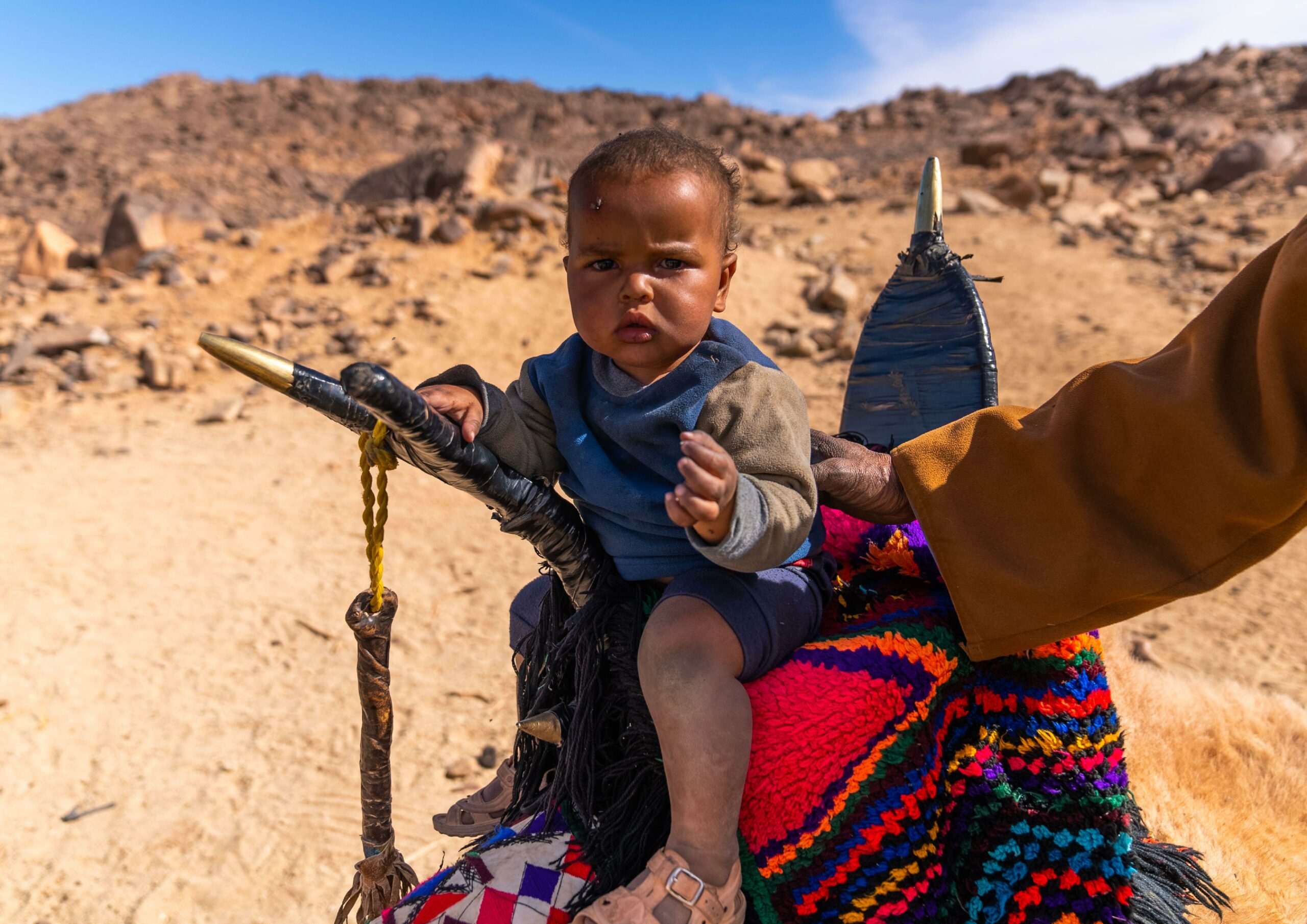Speech, memory and early knowledge
Around the tent, children listen to adults talk, joke, negotiate and sing. They learn stories, genealogies and proverbs. Speech is an art transmitted from an early age. Children are taught to recite riddles and poems, and to understand signs traced on sand (such as igeshan or tifinagh characters). Koranic instruction, oral at first, is often given by a close relative: verses are repeated, and reading and writing are taught at the child’s own pace.
Both men and women can benefit from this knowledge. An educated woman is valued for her ability to converse with guests. Religious or poetic knowledge does not “masculinize” women, but rather strengthens their position in the community.
At the dawn of adolescence: rituals and transitions
Around the age of 10-12, signs of change appear. It’s not so much the physical transformations that count, but a new posture: more restraint in dealing with adults, more subtle gestures, avoiding glances, bodily distance. Boys now wear pants and gird their tunics; girls begin to wear light veils (alesho), their hair carefully braided, their hands adorned with henna. This passage is not insignificant: it signifies entry into the sphere of seduction and gendered responsibilities.
In certain groups, such as the Kel Elghlal, this moment is celebrated with special care reminiscent of that of a young bride. The body is seen in a different light, gestures change and roles become clearer.

